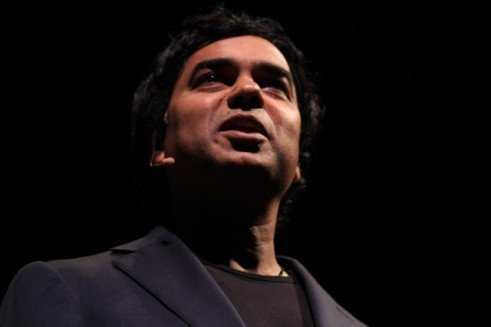
By Liftarn (Traced from Image: Ray Douglas Bradbury.jpg)
[Public domain], via Wikimedia Commons
“Why is it that in a society with a Puritan heritage, we have such completely ambivalent feelings about Work? We feel guilty, do we not, if not busy? But we feel somewhat soiled, on the other hand, if we sweat overmuch?
I can only suggest that we often indulge in made work, in false business, to keep from being bored. Or worse still, we conceive the idea of working for money. The money becomes the object, the target, the end-all and be-all. Thus work, being important only as a means to that end, degenerates into boredom. Can we wonder then that we hate it so? Nothing could be further from true creativity.”
Ray Bradbury
American author (1920-2012)
About Ray Bradbury
Ray Bradbury was an American author and screenwriter known for his works in science fiction, fantasy, and horror. His best-known works include “Fahrenheit 451,” “The Martian Chronicles,” and “Something Wicked This Way Comes.” Throughout his career, Bradbury explored themes of censorship, technology, human nature, and the importance of imagination and creativity.
This quote reflects Bradbury’s belief that true fulfillment comes not from working for external rewards like money or status, but from engaging in creative pursuits that bring intrinsic satisfaction. For Bradbury, meaningful work was inseparable from creativity and passion.
Essential Bradbury Reads:
- Fahrenheit 451 (1953)
- The Martian Chronicles (1950)
- The Illustrated Man (1951)
- Something Wicked This Way Comes (1962)
- Dandelion Wine (1957)
- Zen in the Art of Writing (1990)

